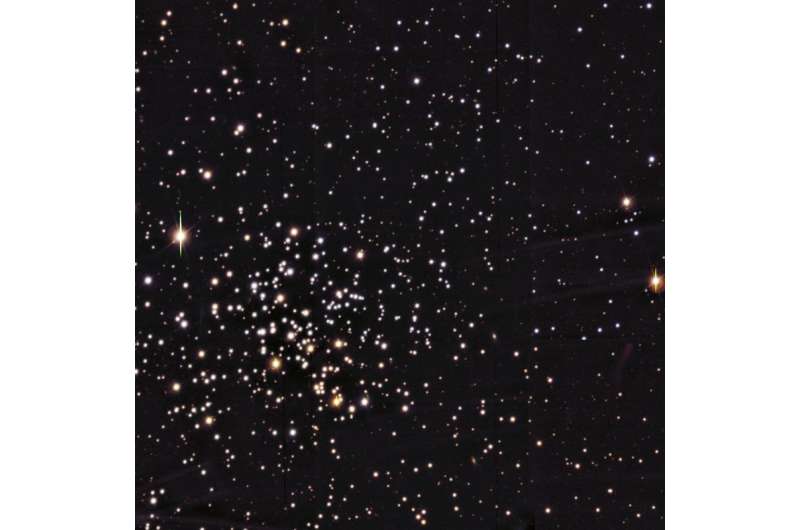Other suns got the right spin

Astrophysicists from the Leibniz Institute for Astrophysics Potsdam (AIP) and the Johns Hopkins University in Baltimore have for the first time measured the rotation periods of stars in a cluster nearly as old as the sun and found them to be similar. It turns out that these stars spin around once in about twenty-six days – just like our sun. This discovery significantly strengthens what is known as the solar-stellar connection, a fundamental principle that guides much of modern solar and stellar astrophysics.
This principle – that the sun is a star – was only proved in the 19th century when distances to the nearest stars were measured. It enables us to use the sun, the only star we can observe in detail, to study processes occurring on other stars, and conversely, to use other stars to infer the past and future of our sun. Stellar rotation periods are a key probe of magnetic phenomena on stars.
The AIP/JHU team worked on the four billion year-old open cluster M67, the only accessible cluster of solar-aged stars. They measured the tiny periodic light variations of twenty sun-like stars caused by starspots on the stellar surfaces being carried across the disk during rotation. Since the examined stars are quite old their starspots are relatively small - similar to spots one can find on our sun but tiny compared to those visible on younger stars. The measurements were only possible because of the exquisite sensitivity of the Kepler Space Telescope, now repurposed as the K2 mission.
Sydney Barnes, first author of the study, states: "We had predicted this would occur, but it has been a real privilege to have been able to actually make the measurements." Co-author Jörg Weingrill adds: "With the measured rotational periods for stars up to the age of our sun we can now confidently trace back the evolution of our home star."
More information: Rotation periods for cool stars in the 4 Gyr-old open cluster M67, the solar-stellar connection, and the applicability of gyrochronology to at least solar age. iopscience.iop.org/article/10. … 7/0004-637X/823/1/16 , arxiv.org/abs/1603.09179
Provided by Leibniz Institute for Astrophysics Potsdam



















